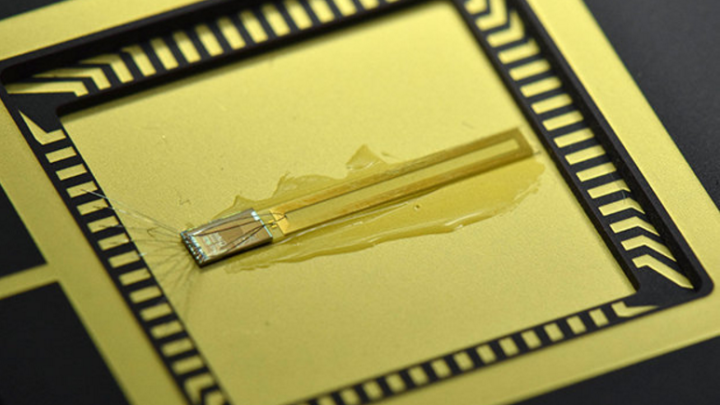
According to Blaauw, implantable electronics often lack the processing power to analyze the body in-situ, and do not include the communications hardware necessary to wirelessly send those results outside of the human body. The stumbling block is not the processor technology, which can be miniaturized fairly easily. Instead, the most difficult component to shrink is the radio module, which often is rather large due to its power and antenna requirements.
Blaauw and colleagues David Wentzloff and Yao Shi tackled this size problem by pairing the tiny broadcast antenna with an exterior receiving antenna. They also built the device with energy efficiency in mind, using a capacitor to provide short energy bursts that are used to send data. To accommodate these short bursts of data, the team had to design a custom encoding method that takes into account the sporadic broadcast schedule. And it doensn’t need to be charged either — all battery charging is controlled by a photovoltaic cell that is sensitive to infrared light passing through the body.
Blaauw and colleagues demonstrated a prototype of their injectable radio at the recent IEEE International Solid-State Circuits Conference. The device measured a minuscule 10 cubic millimeters, and had a powerful onboard radio that could send its signals through three centimeters of tissue and up to 50 centimeters away from the body. Blaauw hopes to continue shrinking this technology until it can fit in a syringe. He’s also working with a team from the University of Michigan’s medical school to develop an injectable device that could provide imaging data as well as measurements such temperature, pressure, pH and more.




